Star Seekers: The Ultimate 5 Toy Telescopes For Kids
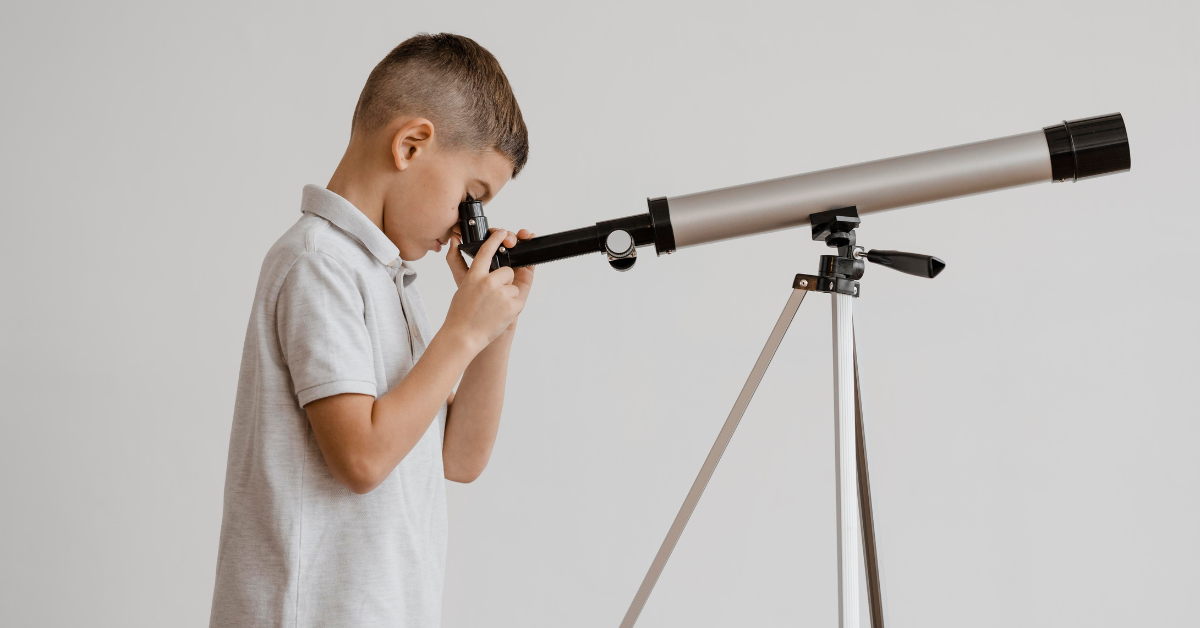
This article contains affiliate links. If you make a purchase through these links, we may earn a commission at no additional cost to you.
Are you dreaming of stargazing with your whole family this summer?
Interest: Introducing the newest way to explore and discover the universe - right in your own backyard! Star Seekers has put together an incredible list of top 5 toy telescopes for children. Now, they can get a glimpse into our vast solar system with just the click of a button.
Plus, these are confidentially designed for every age range so that the whole family can enjoy sailing through galaxies and all their secrets! Everyone will be falling in love with astronomy thanks to these amazing telescopes. Watch wonder lift off as younger children soak up new facts about space and share stories about what they’ve seen above them during those starry nights out. Have fun admiring shooting stars and find out why we have been mesmerized by twinkling skies since ancient times!
Get ready to embark on an intergalactic journey – check out Star Seekers list NOW for 5 Best Telescopes for Kids!
How we choose the Ultimate toy telescopes for Children
Kids are always looking for fun toys that help them explore and learn new things. When it comes to young kids telescopes, however, the options can be overwhelming and confusing.
You want to find a best telescope that is right for your child’s level of interest and development, but don’t know where to start or which features you should consider.
That's why we created the Ultimate and Best Telescopes for Kids! Our exclusive list makes it easy for you to choose the perfect telescope for your child without all the guesswork. With our help, your child will be able to get up close and personal with outer space in no time!
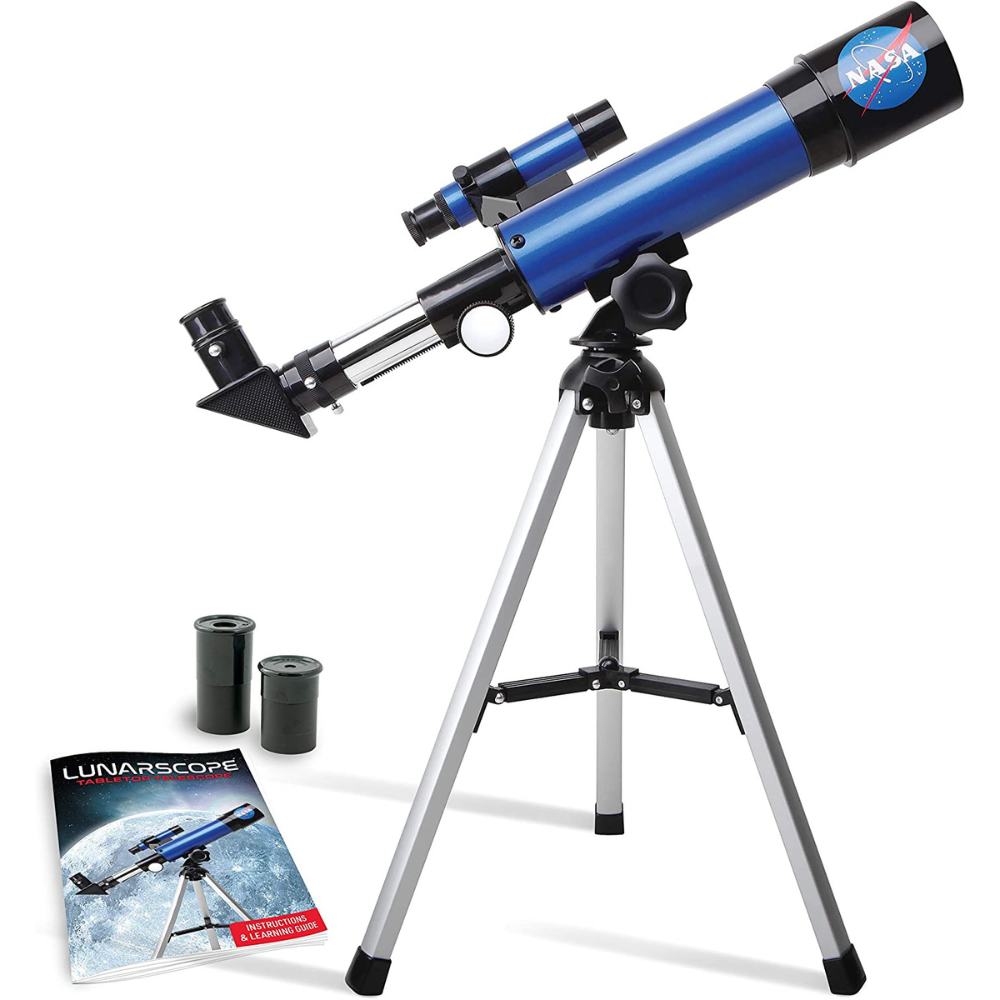
NASA Lunar Telescope for Kids
Kids Telescope for Astronomy Beginners #ad #CommissionsEarned
What We Love
Do you have a budding stargazer and space enthusiast in your life? If so, the NASA Lunar Telescope is the perfect gift! With incredible detail and powerful lenses, this telescope offers a unique opportunity for children to explore the moon in brilliant clarity.
It comes with a sturdy tripod mount and two different eye pieces so everyone can easily find their target and zoom in - perfect for inspiring science-lovers of all ages. The assembly is quick and user-friendly so kids can learn about the night sky from home.
Plus, our commitment to product quality means young astronomers can rely on this telescope time after time. So give that special someone an out-of-this-world experience with the NASA Lunar Telescope!
What You Should Know
Looking up at the sky, it's hard not to wonder what secrets lie beyond the twinkling stars and the glowing moon. With the NASA Lunar Telescope, those secrets are closer than ever before.
This incredible tool offers stunning detail for viewing the moon, making it the perfect gift for any child with an interest in space and astronomy. With a finder scope, low and high-power eyepieces, and a sturdy tripod for steady viewing, it's easy to locate and zoom in on the lunar surface.
Plus, the smooth mounting system makes scanning the moon a breeze. We're all about inspiring a love for science in children, which is why our telescope is simple to assemble and use. Whether you're a young astronomer exploring the universe or a parent bonding with your child over a shared interest, the NASA Lunar Telescope is sure to be a hit.
As always, we're committed to product quality, so if you have any feedback or concerns, please let us know.
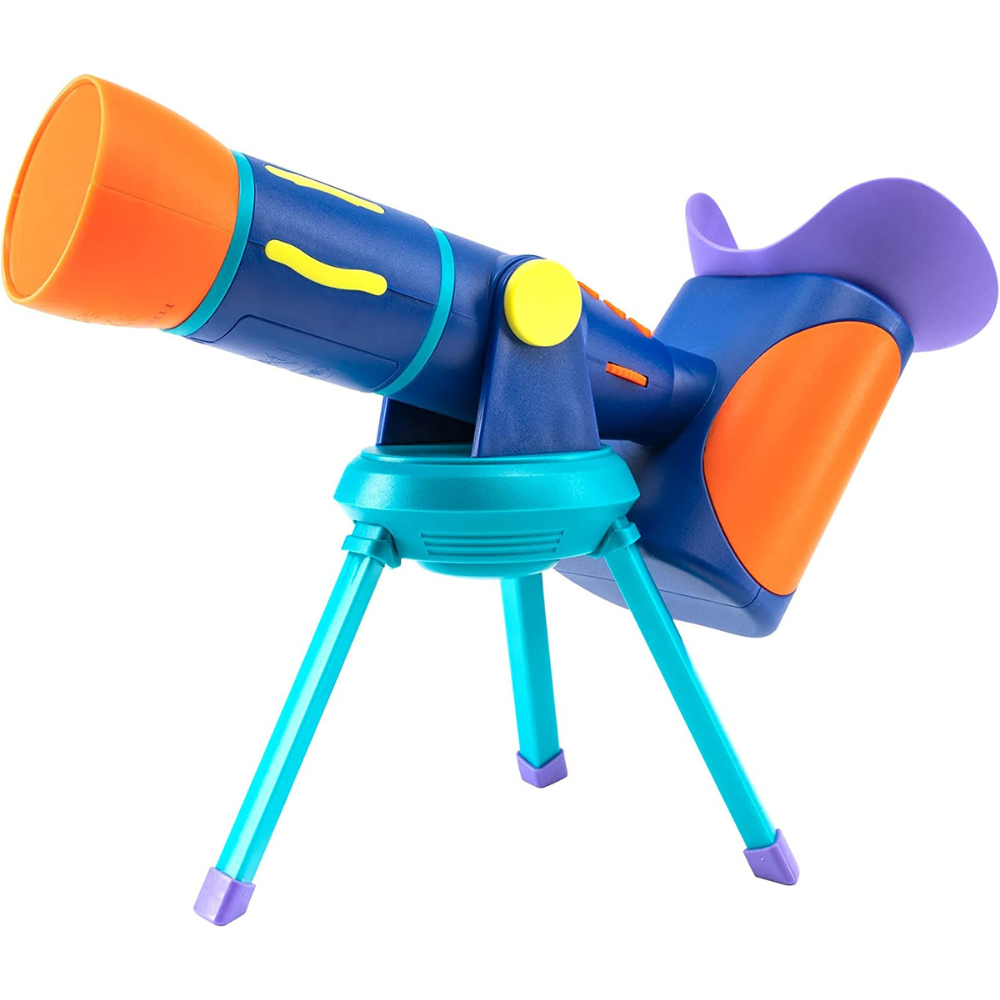
GeoSafari Jr. Talking Telescope STEM Toy
Preschool Science, Gift For Boys & Girls Ages 4+ #ad #CommissionsEarned
What We Love
Thinking about showing your little one the greatness of outer space? Look no further than the GeoSafari Jr. Talking Telescope STEM Toy!
This amazing telescope is a great way to introduce your preschooler to the wonders of space. With 24 eye-opening images from NASA, 240 facts, and quiz questions voiced by Emily Calandrelli (the star of Netflix's show Emily's Wonder Lab!), this is an exciting way to get your child interested in science and a love for the stars. This telescope is perfect for first-time young astronomers looking to explore. It requires no difficult setup – just point it in any direction with ease!
Plus, because high quality images are built-in, there’s no need to worry about tricky focusing or closing one eye, so you can sit back and relax as they learn! It’s also great for at-home education or hours of entertainment as your young kids look into our fascinating universe.
So why wait? Let them take a peek at what lies above us with the GeoSafari Jr. Talking Telescope STEM Toy - an astronomical exploration for both fun and learning awaits!
What We Should Know
Have you ever wanted to explore the vast expanse of our celestial bodies without the hassle of complicated equipment? Look no further than the GeoSafari Jr. Talking Telescope! This telescope is not only designed for preschoolers, but it also features 24 breathtaking high quality images from NASA.
Imagine the endless possibilities as you embark on a journey to explore the stars, whether it's discovering fun facts about your favorite planets or answering quiz questions with Emily Calandrelli, the well-known star of Netflix's show Emily's Wonder Lab.
With the GeoSafari Jr. Talking Telescope, kids can enjoy the wonders of science and space while having fun along the way. Don't miss out on this incredible opportunity to introduce your little ones to the world beyond our atmosphere!
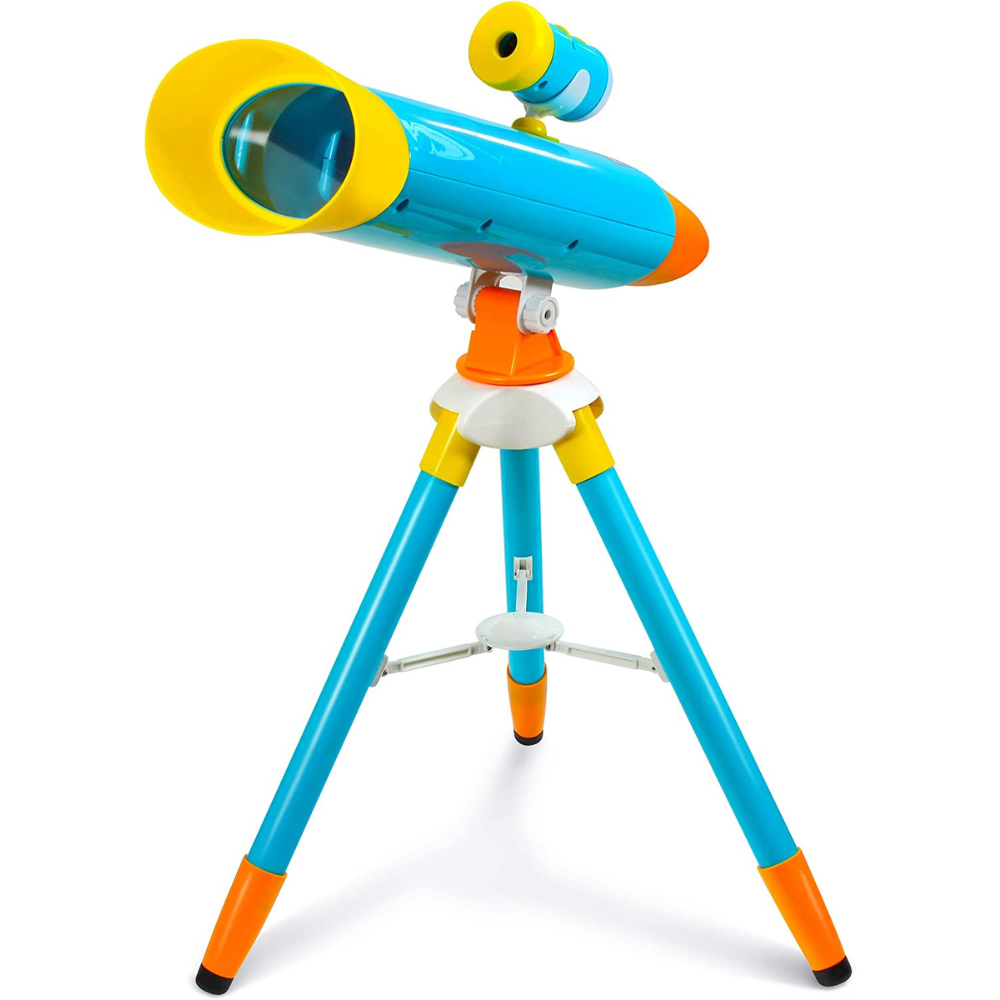
Little Experimenter Telescope
Children Telescope + Projector and 24 Space Images #ad #CommissionsEarned
What We Love
Introducing the Little Experimenter Telescope! With this telescope, your little scientist can explore space from the comforts of home. A 2x magnification lens provides an incredible, vivid 3-D view of the solar system. To make it even more fun, a set of 24 planetary images can be easily projected onto any surface! The telescope has a foldable tripod so they can swivel and point their telescope in any direction and lock it in place when they find something exciting.
We prioritize your satisfaction and built this telescope to last with high-quality materials like a soft eyepiece for extra comfort. And don’t worry about having to buy additional batteries – they’re included! Finally, we top off this STEM learning experience with an activity guidebook filled with exciting information to help them get started on their adventures into space exploration.
So why wait? Make unforgettable memories with Little Experimenter's Telescopes today!
What You Should Know
Get ready to embark on a space adventure with this amazing kids' telescope! With its 2x magnification and foldable tripod, it gives a stunning 3-D view of our solar system. You'll be amazed as you explore the night sky and see the stars up close.
To add even more excitement, the set includes projection discs with 24 planetary images, so you can project space-themed images on your wall or ceiling. And if you want to take a closer look, you can swivel the telescope in any direction or lock it in place for stationary viewing. The soft eyepiece also ensures a comfortable viewing experience.
We want you to be completely satisfied with your purchase, which is why we offer a full money-back guarantee if you encounter any issues along the way. And with batteries included and a guide book filled with fun activities and information, you're ready to blast off into the cosmos!
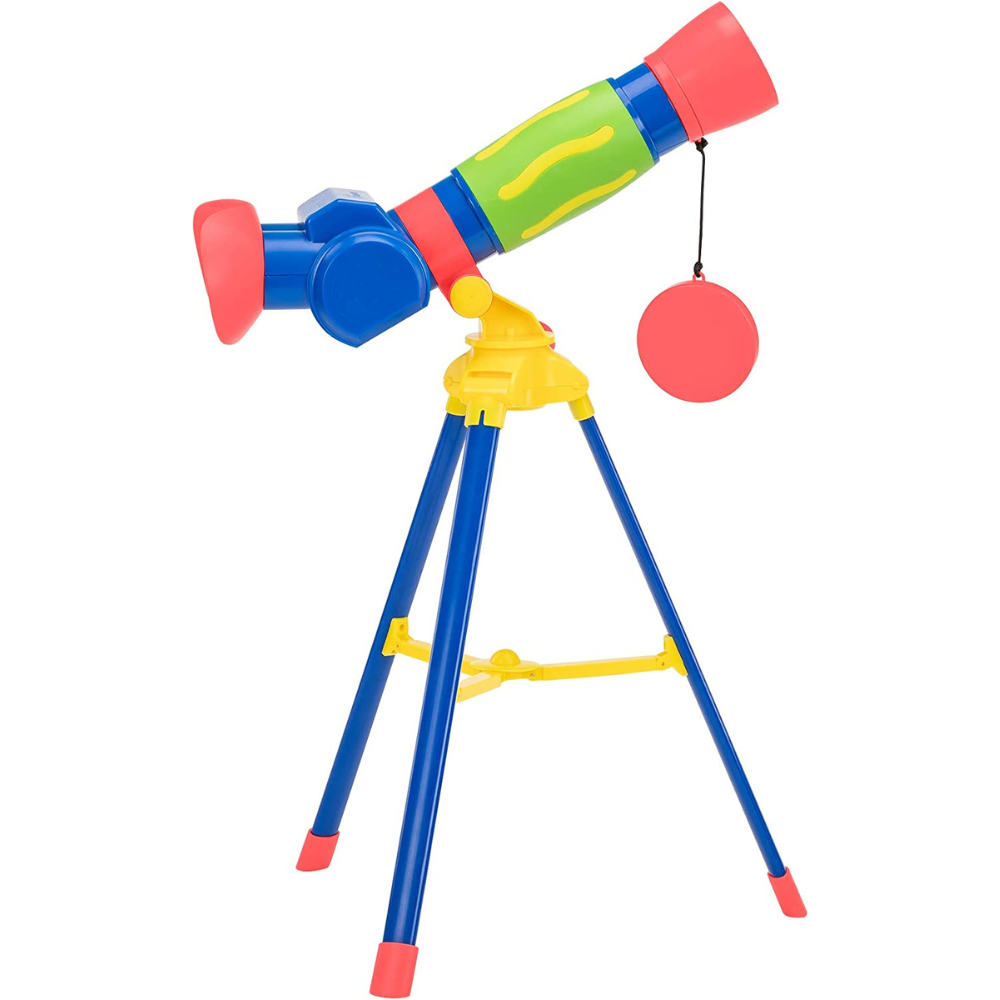
Educational Insights GeoSafari Jr. My First Kids Telescope
Gift for Kids Ages 4+ #ad #CommissionsEarned
What We Love
Explore the natural world with Educational Insights' GeoSafari Jr. My First Kids Telescope! With 9x magnification, this focus-free telescope features extra-large eyepieces sized for a child’s face for a comfortable and frustration-free experience. When you take it to the backyard or park you can peer into outer space in search of stars, planets, and even satellites - providing a hands-on introduction to the exciting realm of science and nature.
And now you don't need to worry about keeping your young astronomers nose out of the way either - My First Telescope's perfect placement nose cutout ensures that enjoying an amazing view is always frustration-free. Begin your journey into the exciting world of outer space today - get GeoSafari Jr's My First Telescope today and let your little one will be star gazing in no time!
What You Should Know
Hey there! Are you ready to discover the world of science and exploration with your little ones? With these science and exploration toys designed just for kids, you can explore the outdoors with 9x magnification and get up close with nature. This telescope is focus-free and features extra-large eyepieces sized for a child’s face.
And, to make things even better, the perfect placement nose cut out ensures a frustration-free experience every time. What better way to provide hands-on experience with a real scientific tool for your kids?
My First Telescope is perfect for backyard explorations, trips to the park, camping, and more.
So, what are you waiting for? Let's embark on an exciting journey and discover the wonderful world of science together!
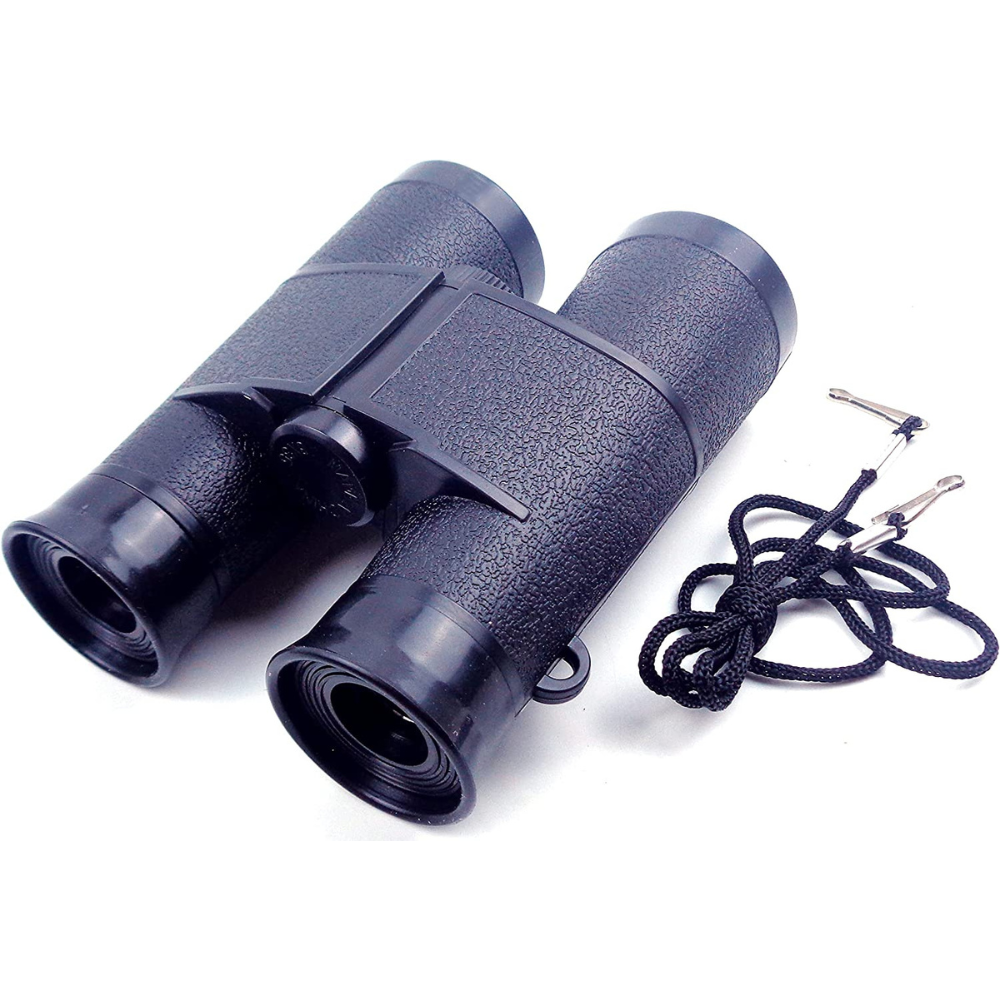
MAGIKON 4X35mm Children Simulation
Children binoculars are easy to operate #ad #CommissionsEarned
What We Love
The MAGIKON 4X35mm Children Simulation Binoculars are the perfect way to get your kids off their screens and exploring nature!
These binoculars not only have an awesome, kid-sized design at just 130mmx101mmx56mm/4.0inx5.1inx2.0in and 4*35mm, but they're super easy for little hands to operate as well!
With these accessories, your children can become everyday explorers during hikes, outdoor adventures, or just observing nature around them! Even better – the binoculars can be used as part of a costume too for even more fun! Get the MAGIKON 4X35mm Children Simulation Binoculars now - it’s a must-have tool for your kid's adventure and exploration activities!
What You Should Know
Have you been looking for a fun and engaging way to get your children outdoors?
Look no further than these awesome children's binoculars! Easy to operate and the perfect size, they're the perfect tool for exploring nature with your little ones. And if your child loves to dress up, they'll love that these binoculars also make a fantastic costume accessory.
Plus, with all the time spent indoors in front of screens these days, it's more important than ever to get kids outside and enjoying nature. So why not make these binoculars a must-have accessory for your next outdoor adventure?
Guide to Buying the Ultimate Toy Telescopes for Children
Trying to find the perfect telescope for your kids can be difficult and overwhelming. With so many to choose from, it’s hard to know what features matter and which are just hype.
You don't want to spend money on something that won’t last or isn't the right fit for your child's needs. But how do you find out which telescope will work best?
Fortunately, our comprehensive guide has all the information you need to make an informed decision when selecting the Best Telescopes for Kids. Our 5 Ultimate Best Toy Telescopes for Kids guide will provide you with the breakdown and comparison of features, prices, and reviews so that you can make an informed and confident purchase!
What are the key features to consider when buying a telescope for kids?
When buying Best telescopes for kids, there are several key features to consider:
- Magnification: Look for a telescope with appropriate magnification for kids, typically in the range of 10x to 50x. Higher magnification may make it difficult for children to stabilize the image.
- Durability: Kids can be rough with their toys, so opt for a telescope made with sturdy materials that can withstand some wear and tear.
- Ease of Use: Choose a telescope that is easy for younger kids to set up, focus, and adjust. Look for features like smooth focusing knobs and user-friendly controls.
- Portability: Consider the size and weight of the telescope, as well as whether it is easily collapsible or comes with a carrying case. This makes it more convenient for kids to take it outdoors or on trips.
- Safety: Ensure that the telescope has child-friendly features and does not pose any potential hazards. Look for best telescopes for kids with soft eyepieces or rubberized coatings to protect young astronomer eyes.
- Accessories: Check if the telescope comes with any additional accessories such as finderscopes, tripods, or extra eyepieces. These can enhance the viewing experience and make it easier for kids to locate objects in the sky.
- Educational Resources: Some kids telescopes may come with accompanying guidebooks, star charts, or educational materials that provide information and activities to engage kids in learning about astronomy.
- Price: Consider your budget while keeping in mind that quality and durability often come at a higher price. Find a balance between affordability and the features you desire.
By considering these key features, you can choose a telescope that is suitable for your child's age, interests, and skill level, providing them with an enjoyable and educational experience.
What is the ideal magnification range for a toy telescope?
The ideal magnification range for a telescope depends on factors like the intended use, age of the child, and aperture size. For younger children or young astronomer, a recommended range is 10x to 30x, providing a wide field of view and stability. Older children or more experienced users may benefit from a range of 40x to 70x for closer views.
However, image stability can be a challenge at higher magnifications. Stability and high quality optics should be prioritized over high magnification. Other factors like atmospheric conditions and light pollution also affect image quality. Considering the overall package of the telescope, including aperture size, optics, and features, is important.
Are there any safety considerations to keep in mind when choosing a telescope for kids?
When choosing a telescope for your child, safety is an important consideration that should not be overlooked. There are several factors you should take into account when making your choice.
Firstly, it's essential to consider the age of your child and choose a telescope that is suitable for them in terms of size and complexity. Telescope sizes vary greatly and often correlate with a higher level of magnification-which may not be suited to younger children who may find this overwhelming or uncomfortable to use.
It's also important to ensure the telescope you purchase has been designed with quality materials such as aluminum or tough plastic which will make sure it remains durable over time; rather than using lower grade materials which can break easily leading to potential hazards such as small parts becoming loose or sharp edges appearing on the apparatus.
Finally, consider any add-ons (such as an eyepiece) that come included with your chosen telescope model and check if they are appropriate for use by younger kids; particularly when selecting accessories featuring smaller parts like screws that can pose a choking hazard if swallowed; so please exercise caution here!
With these considerations in mind, you should have everything necessary to pick out the best telescope for your child while still prioritizing their safety above all else!
What types of astral objects can be observed with a toy telescope?
With a kid telescope, the types of astral objects that can be observed may vary depending on the size, quality, and specifications of the telescope. Toy telescopes typically have smaller apertures and lower magnification compared to more advanced telescopes. Here are some common astral objects that can be observed with a telescope:
- Moon: The Moon is one of the most popular targets for observation. Even with a telescope, you can see lunar craters, mountains, and other surface features.
- Planets: Some of the brighter planets in our celestial bodies, such as Jupiter and Saturn, can be observed with a telescope. Although the details may not be as clear as with a larger telescope, you can still see the planet's major features like Jupiter's cloud bands or Saturn's rings.
- Stars: Telescopes can provide a closer look at brighter stars in the night sky. While individual stars will appear as points of light, you may also be able to observe binary star systems (two stars orbiting each other) or star clusters.
- Constellations: Telescopes can enhance the view of constellations, allowing you to see the stars more clearly and potentially identify individual stars within a constellation.
- Nebulae: Some larger and brighter nebulae, such as the Orion Nebula (M42), can be observable with a kid telescope. While the details may be limited, you may still be able to see the nebula's glowing gas clouds.
- Meteor Showers: During meteor showers, you can use a telescope to observe shooting stars or meteors streaking across the sky. However, you may need to remove the telescope's eyepiece or use lower magnification to increase the field of view for better chances of spotting a meteor.
It's important to manage expectations when using a telescope for children, as their capabilities are often limited compared to more advanced telescopes. However, even with a toy telescope, you can still have fun exploring the night sky and getting a glimpse of various astral objects.
How easy is it to assemble and use the toy telescope?
The ease of assembly and use of a telescope for children can vary depending on the specific model and manufacturer.
Generally, toy telescopes are designed to be relatively simple and user-friendly, especially for children. Here are some general considerations regarding assembly and usage:
Assembly:
- Most toy telescopes come with a set of instructions or a user manual that provides step-by-step guidance on how to assemble the telescope. These instructions should be clear and easy to follow.
- Toy telescopes typically have fewer components compared to more advanced telescopes, making the assembly process simpler. They often consist of a main tube, eyepieces, tripod, and maybe a few other accessories.
- Ensure that all parts are securely and correctly connected during assembly. Make sure to tighten any screws or attachments according to the manufacturer's instructions.
Usage:
- Toy telescopes are designed to be intuitive and easy to use, especially for beginners and children. They also provide adjustable tripod. They often have simplified controls and fewer adjustment options compared to more advanced telescopes.
- Familiarize yourself and the child with the basic components of the good telescope, such as the main optical tube, eyepieces, and the mount or tripod.
- Follow the instructions provided by the manufacturer on how to align and adjust the telescope for proper viewing. This may involve adjusting the focus, aligning the telescope with a specific celestial object, or calibrating any alignment mechanisms.
- Practice using the telescope during daylight hours to become familiar with the controls, focusing, and alignment procedures before attempting to observe astronomical objects at night.
- Adult supervision is recommended, especially for younger kids, to ensure safe handling of the telescope and to provide guidance during observation.
While toy telescopes are generally designed to be user-friendly, it's essential to carefully read and follow the specific instructions provided by the manufacturer for your particular model. This will help you assemble and use the telescope correctly, ensuring a more enjoyable and successful observing experience.
Are there any additional accessories or features that enhance the viewing experience?
Yes, there are several additional accessories and features that can enhance the viewing experience with a telescope for children. While telescopes for children often come with basic components, you may consider acquiring some of the following accessories to expand the capabilities and enjoyment of your telescope:
- Additional Eyepieces: Different eyepieces provide varying levels of magnification and field of view. Having a set of eyepieces with different focal lengths can allow you to observe astral objects at different levels of detail and zoom.
- Barlow Lens: A Barlow lens is an accessory that increases the effective focal length of your telescope, effectively doubling or tripling the magnification. It can be used in combination with your existing eyepieces to achieve higher magnification without purchasing additional ones.
- Moon Filter: A moon filter is a neutral-density filter that reduces the brightness of the Moon, making it more comfortable to observe, especially during its brighter phases. It helps enhance the contrast and details of lunar and planetary viewing.
- Planetary Filters: Filters specifically designed for observing planets can enhance the visibility of certain features. For example, a color filter can help bring out the details of cloud bands on Jupiter or enhance the contrast of Martian surface features.
- Finderscope: Some toy telescopes may come with a finderscope, but if not, you can consider adding one. A finderscope is a small, low-magnification telescope that helps you locate and center objects in the main telescope's field of view more easily.
- Smartphone Adapter: A smartphone adapter allows you to attach your smartphone to the eyepiece, enabling you to capture photos or videos of astronomical objects through the telescope. This can be a great way to share and preserve your observations.
- Star Charts or Sky Maps: Having a star chart or sky map, either in printed form or through a mobile app, can help you navigate the night sky and identify different astral objects. It's a useful tool for locating specific stars, constellations, and other interesting targets.
These accessories can provide added versatility and convenience, allowing you to explore different objects and enhance your overall observing experience.
However, it's important to note that not all toy telescopes may be compatible with all accessories, so it's advisable to check the specifications and compatibility before purchasing any additional accessories.
What is the recommended age range for the toy telescope?
The recommended age range for a telescope for children can vary depending on the specific model, complexity, and manufacturer's guidelines.
Generally, toy telescopes are designed for children around the ages of 8 and up, but this is not a strict rule. It's important to consider the child's individual abilities, interests, and maturity level when determining if a particular telescope is suitable for them.
Some toy telescopes are specifically designed for younger children, with simplified features, sturdy construction, and easy-to-use controls. These telescopes often have lower magnification and are built to withstand rough handling. They can serve as an introductory tool to spark an interest in astronomy and provide basic observations of the Moon, stars, and nearby planets.
For older children, there are more advanced toy telescopes available that offer higher magnification, better optics, and additional features. These telescopes may provide a more detailed view of astral objects and offer a better learning experience for older kids interested in astronomy.
It's important to note that while toy telescopes can provide a fun and educational introduction to astronomy, they are not typically designed for professional-level observations.
If a child is particularly interested in pursuing astronomy as a serious hobby, it may be worth considering more advanced telescopes designed for older kids or beginners in astronomy.
Ultimately, the recommended age range for a telescope should be considered in conjunction with the child's individual abilities, interests, and adult supervision. It's always a good idea to read the manufacturer's recommendations and consult with the child's parents or guardians before purchasing a telescope for a specific age group.
Are there any notable brands known for producing high-quality toy telescopes for children?
Toy telescopes can work to some extent, but their performance and capabilities are generally limited compared to more advanced telescopes. Toy telescopes are designed with simplicity and ease of use in mind, often with smaller apertures and lower magnification. Here are some points to consider regarding the functionality of toy telescopes:
- Magnification: Toy telescopes typically have lower magnification capabilities compared to more advanced telescopes. While they can provide closer views of objects, the level of detail may be limited.
- Optics Quality: The quality of optics in toy telescopes may not be as high as in professional or intermediate-level telescopes. This can affect the clarity and sharpness of the observed objects.
- Aperture: Toy telescopes often have smaller apertures, which can limit the amount of light they gather. This can affect the brightness and visibility of celestial objects, especially for fainter deep-sky objects.
- Stability and Tripod: The stability of the telescope and tripod can impact the viewing experience. Some toy telescopes may have less stable mounts, which can result in shaky images and make it more challenging to observe objects.
- Limited Accessories: Toy telescopes may have limited or no provision for additional accessories, such as eyepieces or filters, which can further enhance the viewing experience.
Despite these limitations, toy telescopes can still provide a fun and educational introduction to astronomy for kids. They can be used to observe the Moon, bright planets, stars, and simple celestial objects. Toy telescopes can help children develop an interest in astronomy, learn basic observational skills, and become familiar with the night sky.
It's important to manage expectations and understand that toy telescopes are designed for entry-level use and may not provide the same level of performance as more advanced telescopes. If a child develops a deeper interest in astronomy, it may be worthwhile to consider upgrading to a higher-quality telescope with better optics and more advanced features.
Can the telescope for children be used for daytime observations as well?
Yes, some toy telescopes can be used for daytime observations as well. They can be fitted with appropriate filters for safe solar viewing, allowing you to observe the Sun.
Toy telescopes can also be used to observe terrestrial objects like birds, landscapes, or buildings, providing a closer view similar to a small spotting scope. Adjusting the focus and ensuring stability are important for clear views.
However, it's important to note that toy telescopes may not have optimized optics for daytime use, and dedicated spotting scopes or binoculars may provide better image quality. Always exercise caution and avoid looking directly at the Sun or bright light sources, as it can be harmful.
What is the overall durability and longevity of the telescope?
The durability and longevity of a telescope can vary based on factors like brand, materials, construction, maintenance, and handling. Higher-quality telescopes made of durable materials tend to last longer.
Proper care, such as avoiding rough treatment and storing it safely, can help prolong its lifespan. Regular maintenance and following the manufacturer's instructions for cleaning contribute to longevity. Intended use and exposure to harsh conditions can impact the telescope's lifespan. Some toy telescopes offer upgrade options to extend functionality.
Checking for a manufacturer's warranty provides additional reassurance. While toy telescopes may not match the durability of advanced telescopes, with proper care, they can provide years of enjoyment. Reading reviews and researching reputable brands can help make an informed purchasing decision.
Looking for the Ultimate Toy Telescopes for Children
If you are looking for a great way to spark your child’s interest in astronomy and astrology, then getting them one of the highly recommended telescopes from our list is a great way to go! You can make their dreams come true and encourage your little ones to engage in activities that will benefit them for years.
After reading this blog post, you should have all of the necessary information to pick out the perfect telescope for your children. Be sure to check out our top picks and read through our criteria so that you can decide what telescope features are most important to you. With a wide variety of options on the market today, it can be overwhelming at times-- but that doesn't mean you can't find the best option.
We hope this blog post has helped narrow down your choices so that you can get the best telescopes for your child now! Tap the button below to check the price and take advantage of these amazing offers today.
Note: As an Amazon Associate I earn from qualifying purchases.
This article could include affiliate links, implying that I might earn a minor commission from product sales made through these links. Rest assured, all viewpoints are sincere and continue to reflect my personal stance.
